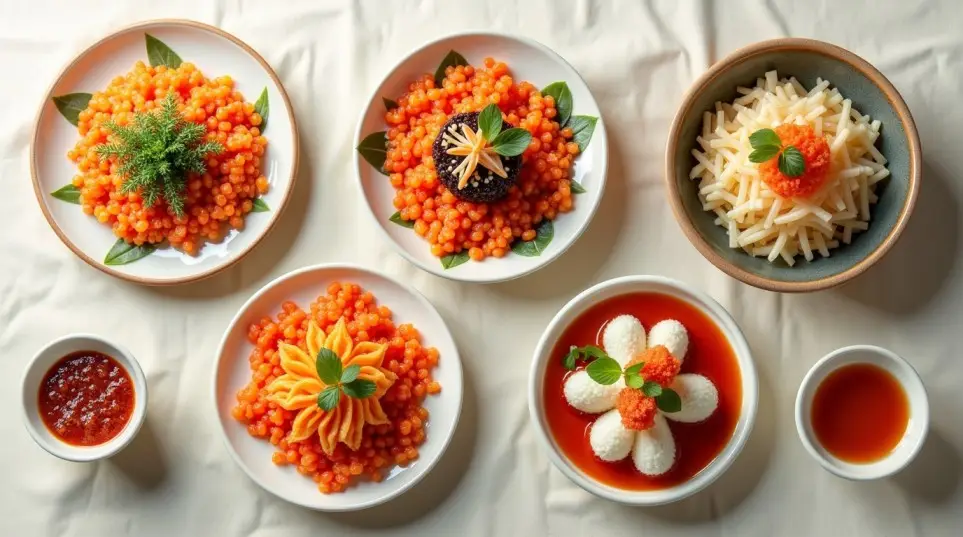The Japanese plum (Prunus salicina) is a delicious and versatile fruit that has been cherished for centuries. Originating from China but widely cultivated in Japan, this fruit is known for its juicy texture, sweet and tart flavor, and numerous health benefits. Japanese plums are commonly enjoyed fresh, used in cooking, or processed into Japanese plum wine (Umeshu), jams, and desserts. This article will dive deep into everything about Japanese plums, including their benefits, cultivation, culinary uses, and much more.
Is Japanese Plum Fruit Edible?
Yes, Japanese plum fruit is edible and widely enjoyed both fresh and processed. It has a juicy texture with a mix of sweet and tangy flavors, making it a popular choice in both desserts and savory dishes. While the flesh is safe to eat, the seed should not be consumed as it contains trace amounts of cyanogenic compounds, which can be toxic in large quantities.
What is the Japanese Name for Plum?
In Japan, plums are known as “ume” (梅). However, it is important to distinguish between ume (Prunus mume), which is more commonly used for pickling into umeboshi and making Umeshu, and Japanese plums (Prunus salicina), which are usually eaten fresh. Despite their differences, both types of plums hold significant cultural and culinary importance in Japan.
What is the Difference Between a Japanese Plum and a Normal Plum?

Many people wonder, what is the difference between a Japanese plum and a normal plum? While both belong to the Prunus genus, they have distinct characteristics:
Japanese Plum vs. European Plum (Normal Plum)
| Feature | Japanese Plum (Prunus salicina) | European Plum (Prunus domestica) |
|---|---|---|
| Shape | Round or slightly oval | More oval and elongated |
| Skin Texture | Smooth, often reddish or yellow | Thick, usually purple or green |
| Flavor | Sweet and slightly tart | Richer and less tart |
| Best Use | Fresh eating, cooking, wine | Drying into prunes, baking |
European plums are often dried into prunes, while Japanese plums are more commonly consumed fresh or used in making Japanese plum wine.
Nutritional Value and Health Benefits
Japanese plums are not only delicious but also packed with essential nutrients.
Nutritional Profile (Per 100g of Japanese Plum)
| Nutrient | Amount |
| Calories | 46 kcal |
| Carbohydrates | 11g |
| Fiber | 1.4g |
| Vitamin C | 9.5mg |
| Potassium | 157mg |
| Antioxidants | High |
Health Benefits
- Supports Digestion – High fiber content aids digestion and prevents constipation.
- Boosts Immunity – Rich in Vitamin C, it strengthens the immune system.
- Heart Health – Potassium helps maintain blood pressure levels.
- Weight Management – Low in calories and high in fiber, making it a good snack option.
- Anti-Aging Properties – Loaded with antioxidants that protect cells from damage.
- Improves Skin Health – The antioxidants in plums help in reducing skin inflammation and promoting a healthy glow.
- Enhances Bone Strength – Studies suggest that plums may aid in bone density and prevent osteoporosis.
How to Grow Japanese Plum Trees
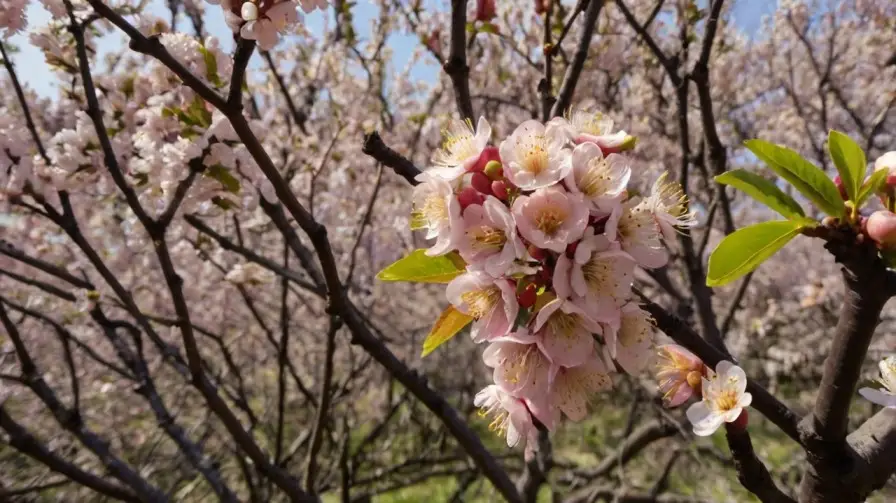
Ideal Growing Conditions
- Climate: Prefers temperate to warm climates.
- Soil: Well-drained, slightly acidic soil with organic matter.
- Sunlight: Requires full sun (at least 6–8 hours per day).
Planting and Care Tips
- Plant trees in early spring or fall.
- Water regularly but avoid overwatering.
- Prune annually to maintain shape and encourage fruiting.
- Protect from pests like aphids and fungal infections.
- Mulching around the base helps retain moisture and suppress weeds.
Harvesting Japanese Plums
- Plums are ready to harvest when they feel slightly soft and develop a strong aroma.
- Store fresh plums in the refrigerator to extend shelf life.
- Overripe plums can be used in making jams or fermented into wine.
Japanese Plum Recipes
Japanese plums are incredibly versatile in cooking. Here are some popular ways to enjoy them:
1. Japanese Plum Jam
A sweet spread for toast and pastries, made by cooking plums with sugar and lemon juice until thick and glossy.
Ingredients
- 1 kg (2.2 lbs) Japanese plums (ume or red plums)
- 500 g (2.5 cups) granulated sugar (adjust according to sweetness)
- 1 tbsp lemon juice
- 1/2 cup water
Instructions
- Prepare the Plums:
- Wash the plums thoroughly, remove the pits, and cut them into small pieces.
- Cook the Plums:
- In a large pot, combine the plums, sugar, and water.
- Bring to a gentle boil over medium heat, stirring occasionally.
- Simmer and Reduce:
- Reduce heat and let the mixture simmer for about 30–40 minutes, stirring often.
- Use a wooden spoon to mash the plums as they soften.
- Add Lemon Juice & Thicken:
- Stir in the lemon juice to enhance flavor and help with preservation.
- Continue simmering until the mixture thickens to jam consistency.
- Store the Jam:
- Pour the hot jam into sterilized glass jars, seal tightly, and let cool.
- Store in the refrigerator for up to 3 months or process in a water bath for longer shelf life.
Serving Suggestion
Enjoy on toast, scones, pancakes, or as a filling for pastries.
2. Plum Chutney
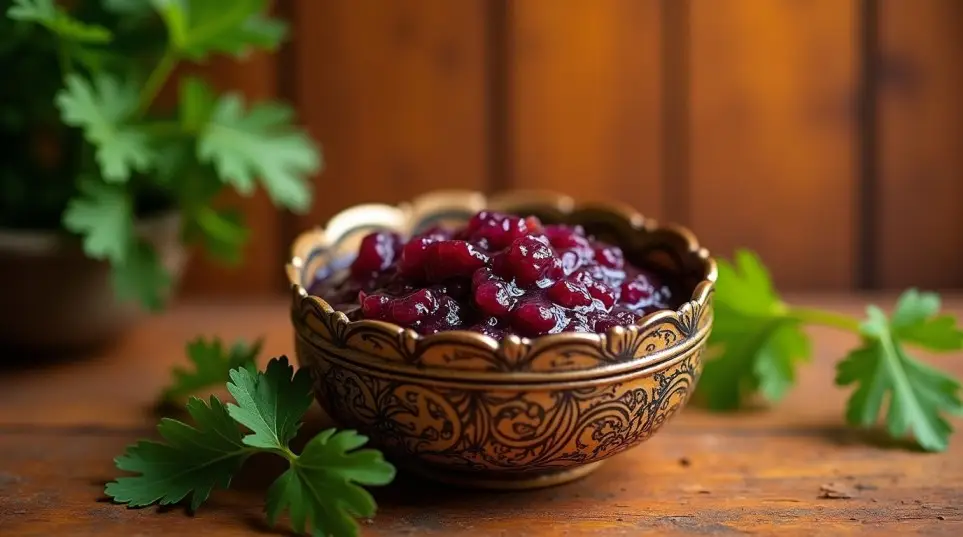
A flavorful addition to grilled meats, combining plums with onions, vinegar, and spices for a tangy-sweet condiment.
Ingredients
- 500 g (1.1 lbs) Japanese plums, pitted and chopped
- 1 medium onion, finely chopped
- 1/2 cup apple cider vinegar
- 1/2 cup brown sugar
- 1-inch ginger, grated
- 1 tsp mustard seeds
- 1/2 tsp cinnamon
- 1/2 tsp chili flakes (adjust to taste)
- 1/2 tsp salt
Instructions
- Prepare Ingredients:
- Wash, pit, and chop the plums into small pieces.
- Finely chop the onion and grate the ginger.
- Cook the Chutney:
- In a saucepan, heat a small amount of oil and toast the mustard seeds until they pop.
- Add the onions and sauté until translucent.
- Stir in the plums, ginger, vinegar, sugar, and spices.
- Simmer & Reduce:
- Cook on low heat, stirring occasionally, until the mixture thickens (about 30–40 minutes).
- Store the Chutney:
- Let the chutney cool slightly, then transfer to sterilized jars.
- Store in the refrigerator for up to 2 months.
Serving Suggestion
Pairs wonderfully with grilled chicken, lamb, roasted vegetables, or cheese boards.
3. Japanese Plum Tart

A delicious dessert with a rich plum filling, featuring a buttery crust topped with caramelized Japanese plum slices.
Ingredients
For the Crust:
- 1 1/4 cups all-purpose flour
- 1/2 cup unsalted butter (cold, cubed)
- 1/4 cup powdered sugar
- 1 egg yolk
- 2 tbsp ice water
For the Plum Filling:
- 4-5 Japanese plums, sliced
- 1/4 cup granulated sugar
- 1 tbsp cornstarch
- 1/2 tsp cinnamon
- 1 tbsp lemon juice
Instructions
- Make the Crust:
- In a food processor, pulse flour, butter, and sugar until crumbly.
- Add the egg yolk and ice water, mixing until the dough forms.
- Wrap in plastic and chill for 30 minutes.
- Prepare the Filling:
- Slice the plums and mix with sugar, cornstarch, cinnamon, and lemon juice.
- Assemble the Tart:
- Roll out the dough, place in a tart pan, and press to fit.
- Arrange the plum slices in a circular pattern on the crust.
- Sprinkle extra sugar on top.
- Bake the Tart:
- Preheat oven to 180°C (350°F) and bake for 35–40 minutes until golden brown.
- Cool & Serve:
- Let cool before slicing. Serve with whipped cream or ice cream.
4. Plum Sauce for Meat Dishes
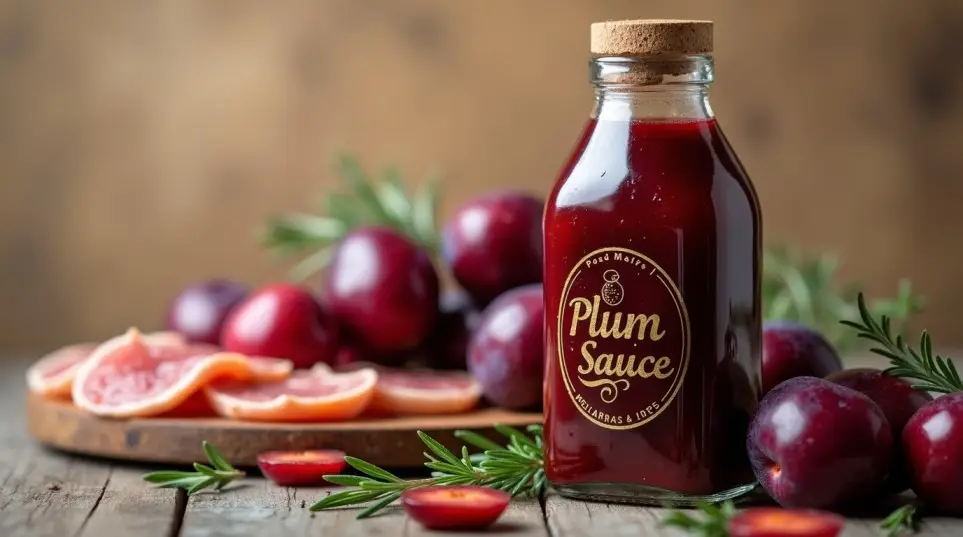
A tangy sauce that pairs well with duck, pork, or chicken, often made with plums, soy sauce, ginger, and honey.
Ingredients
- 500 g (1.1 lbs) Japanese plums, pitted and chopped
- 1/4 cup brown sugar
- 1/4 cup rice vinegar
- 1 tbsp soy sauce
- 1 tsp grated ginger
- 1 clove garlic, minced
- 1/2 tsp chili flakes (optional)
Instructions
- Cook the Plums:
- In a saucepan, combine plums, sugar, and vinegar over medium heat.
- Stir occasionally and cook until plums soften.
- Add Flavorings:
- Stir in soy sauce, ginger, garlic, and chili flakes.
- Blend the Sauce:
- Use an immersion blender to blend the mixture into a smooth sauce.
- Simmer & Thicken:
- Cook for another 10 minutes until thickened.
Serving Suggestion
Drizzle over roasted meats or use as a dipping sauce.
5. Fermented Japanese Plum Vinegar
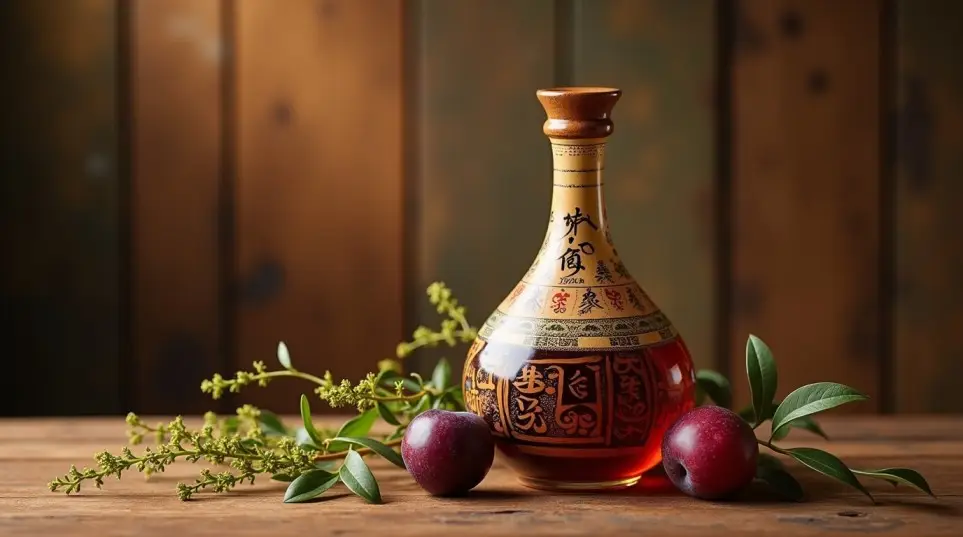
Used in Japanese cuisine for seasoning and pickling, made by fermenting plums with salt and water over time.
Ingredients
- 1 kg (2.2 lbs) Japanese plums (green ume or ripe plums)
- 200 g (1 cup) coarse sea salt
- 2-3 shiso leaves (optional, for color)
- 1 glass jar with an airtight lid
Instructions
- Prepare the Plums:
- Wash and dry the plums. Remove any stems.
- Salt the Plums:
- In a glass jar, layer plums and salt, pressing down firmly.
- Fermentation Process:
- Cover with a weight and seal the jar. Store in a cool, dark place for 1–2 months.
- Extract the Vinegar:
- As plums ferment, liquid (umezu) will form at the bottom.
- After 2 months, strain and store the vinegar in a bottle.
Usage
Use as a salad dressing, for pickling vegetables, or in marinades.
Japanese Plum Wine (Umeshu)
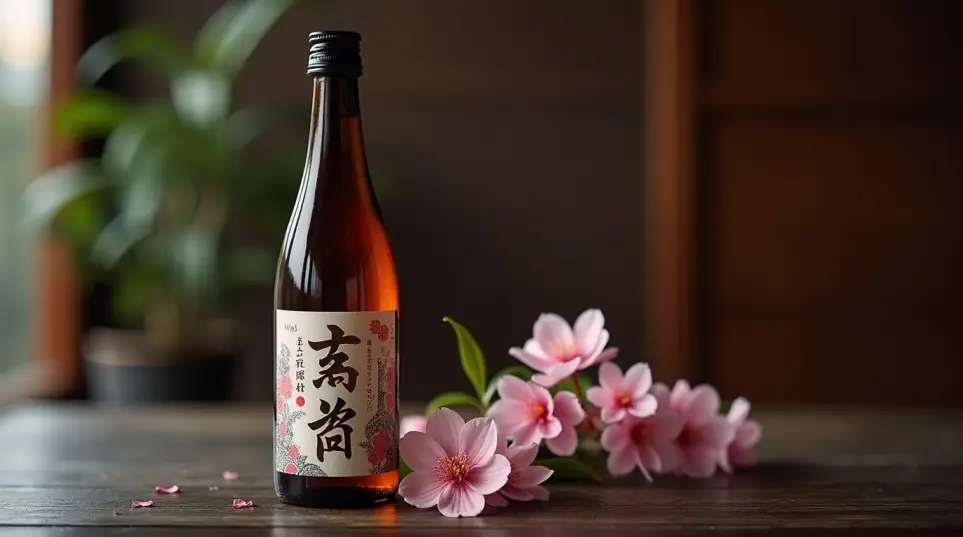
One of the most famous uses of Japanese plums is in making Umeshu, a sweet and aromatic Japanese plum wine.
How is Umeshu Made?
- Fresh plums are steeped in shochu (Japanese distilled alcohol) and sugar.
- The mixture is left to ferment for several months.
- The result is a smooth, sweet wine with a fruity aroma.
How to Enjoy Japanese Plum Wine
- Serve chilled over ice.
- Mix with soda for a refreshing cocktail.
- Use as a marinade for meats or desserts.
- Add a splash to herbal teas for a unique twist.
Conclusion
Japanese plums are a fantastic fruit with a wide range of uses, from fresh eating to making Japanese plum wine. They are packed with health benefits, easy to grow, and perfect for various recipes. Whether you’re looking to enjoy a fresh plum, make a delicious jam, or sip on Umeshu, this fruit has something to offer for everyone. Next time you come across Japanese plums, don’t hesitate to give them a try!








